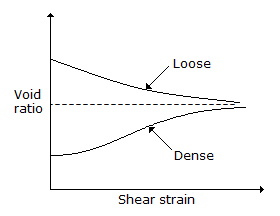Civil Engineering - UPSC Civil Service Exam Questions
Exercise : UPSC Civil Service Exam Questions - Section 15
- UPSC Civil Service Exam Questions - Section 14
- UPSC Civil Service Exam Questions - Section 27
- UPSC Civil Service Exam Questions - Section 26
- UPSC Civil Service Exam Questions - Section 25
- UPSC Civil Service Exam Questions - Section 24
- UPSC Civil Service Exam Questions - Section 23
- UPSC Civil Service Exam Questions - Section 22
- UPSC Civil Service Exam Questions - Section 21
- UPSC Civil Service Exam Questions - Section 20
- UPSC Civil Service Exam Questions - Section 19
- UPSC Civil Service Exam Questions - Section 18
- UPSC Civil Service Exam Questions - Section 17
- UPSC Civil Service Exam Questions - Section 16
- UPSC Civil Service Exam Questions - Section 15
- UPSC Civil Service Exam Questions - Section 1
- UPSC Civil Service Exam Questions - Section 13
- UPSC Civil Service Exam Questions - Section 12
- UPSC Civil Service Exam Questions - Section 11
- UPSC Civil Service Exam Questions - Section 10
- UPSC Civil Service Exam Questions - Section 9
- UPSC Civil Service Exam Questions - Section 8
- UPSC Civil Service Exam Questions - Section 7
- UPSC Civil Service Exam Questions - Section 6
- UPSC Civil Service Exam Questions - Section 5
- UPSC Civil Service Exam Questions - Section 4
- UPSC Civil Service Exam Questions - Section 3
- UPSC Civil Service Exam Questions - Section 2
6.
Consider the following statements :
Total flat is :
1. the time span by which the starting (or finishing) of an activity can be delayed without delaying the completion of the project.
2. difference between maximum time available and the actual time required to perform the activity.
3. difference between its earliest finish time and the earliest start time of its successor activity.
Which among the following is/are correct ?
Total flat is :
1. the time span by which the starting (or finishing) of an activity can be delayed without delaying the completion of the project.
2. difference between maximum time available and the actual time required to perform the activity.
3. difference between its earliest finish time and the earliest start time of its successor activity.
Which among the following is/are correct ?
7.
In a linear reservoir, the
8.
The given figure shows the relation between void ratio and shear strain for a sand under two density conditions. The void ratio corresponding to the dashed line is called


9.
The separation of boundary layer takes place when the pressure gradient is
10.
A free vortex formed from originally still water, say, as when draining still water in a flat-bottomed basin by suddenly pulling the stopper at the bottom on the drain hole, will be
Quick links
Quantitative Aptitude
Verbal (English)
Reasoning
Programming
Interview
Placement Papers